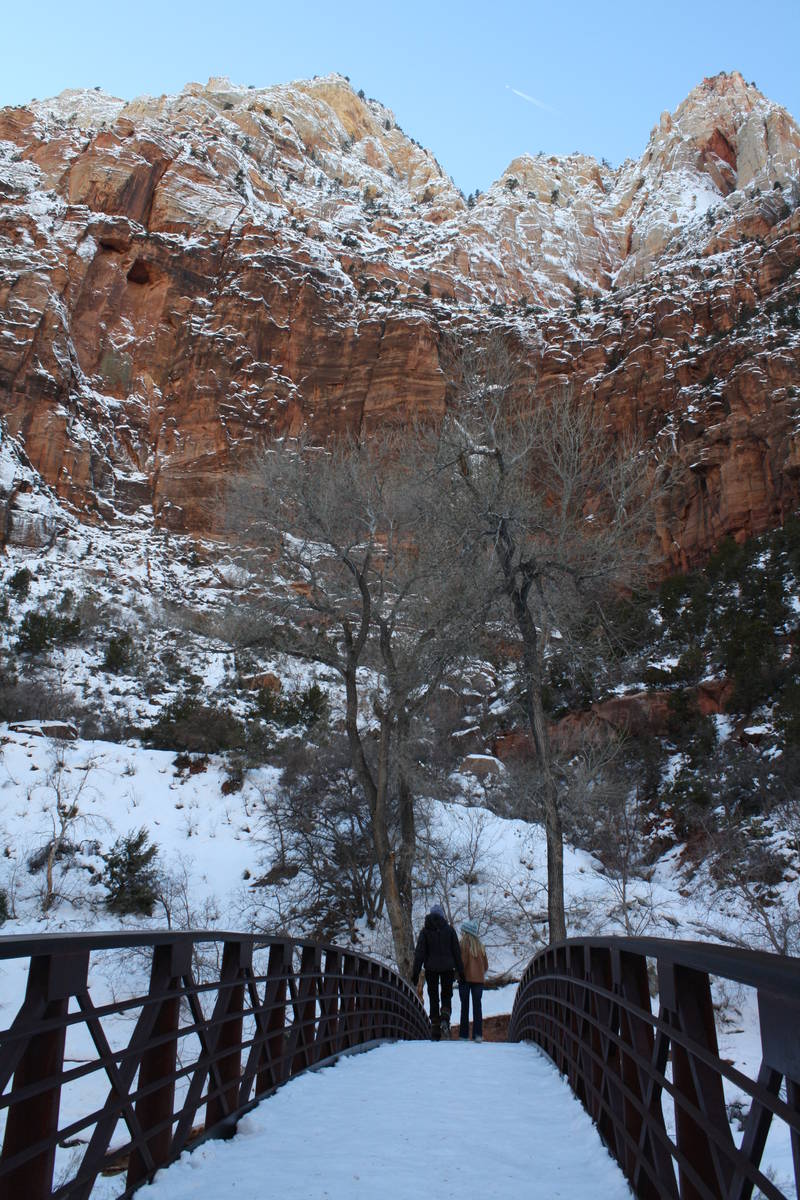It does get cold in Nevada. Here’s how to prevent hypothermia
Although here in Southern Nevada we don’t experience the brutal winters seen in much of the West, hypothermia can still be a real threat for outdoor lovers. Many people are unaware that you can become hypothermic without even being exposed to freezing temperatures.
Normal core temperature for most people runs around 98.6 degrees, when it drops a few degrees below that, hypothermia can start. Even being outside with temperatures in the 50s, with prolonged exposure to wind and rain, can cause symptoms. It’s important to prepare for emergencies you hope will not arise, and to dress properly from head to toe when outdoors.
Being well nourished and hydrated before setting out is always a good idea, especially in cold weather. Pack a few more candy bars and extra trail mix than you expect to eat if all goes well. They will help you stay warm if things go bad.
A layering system of clothing works best. For every layer, you can find a light, mid-weight to heavyweight option, depending on what the outdoor conditions will be. Never wear cotton for outdoor adventures in cool weather, for it notoriously loses insulating value when wet with precipitation or even your own sweat.
Your base layer, next to your skin, should be synthetic wicking fabric. Synthetics don’t absorb moisture from perspiration; they lift it out and evaporate it. Your second layer of clothing might be a synthetic fleece vest or jacket to keep in the heat. In very chilly weather, a down-filled jacket or down sweater could be worn, but only if you can be assured it won’t get wet. Down is greatly compromised when wet and loses its insulating value. Your outer layer should be a waterproof shell that keeps out rain, snow and wind. For frigid weather, you will want the same layering on your legs. Finish your outfit off by wearing good socks of wool mix or synthetics, insulated boots, a warm hat that covers the ears, and appropriate gloves.
One reason hypothermia is so dangerous is, you might not realize you’re experiencing it. Be sure everyone in your family or outing is acquainted with the telltale signs, hopefully averting a mild case of hypothermia turning into a life-threatening one. Often it starts as shivering, numbness and lack of coordination. In combination these signs should be taken seriously and the person should be taken to a heat source, where any wet clothes should be removed and replaced with dry ones or a blanket. Have them start moving around to warm them up. Warm sweet liquids (non-alcoholic) can help.
If a person is non-responsive and acting confused, this signals a severe drop in body temperature that may cause heart and respiratory failure. Hypothermia this severe is life-threatening and requires medical attention. Someone should stay with the victim while someone else calls or goes for help from rangers or other emergency responders.
Taking an unexpected dunk into a cold stream or river can be especially dangerous, causing you to lose body heat 25 percent faster than in just cold air. Get the wet person out of the water immediately and remove any wet clothing, make him put on any dry clothes you or others have, or wrap the victim in an emergency blanket. Build a fire straight away.
The bottom line is to be prepared for inclement weather before you set out. Besides a good layering system and the essential hiking items you ordinarily carry such as food, water, first-aid items, knife, headlamp, etc., in cold and wet weather, add extra clothing, an emergency blanket, fire starters and a lighter that works, such as a disposable Bic. One great advantage of disposable butane lighters is that they’ll typically light even after immersion in water. But even so, keep all emergency items dry by putting them in a dry bag or a sealed trash bag, inside your backpack.

























